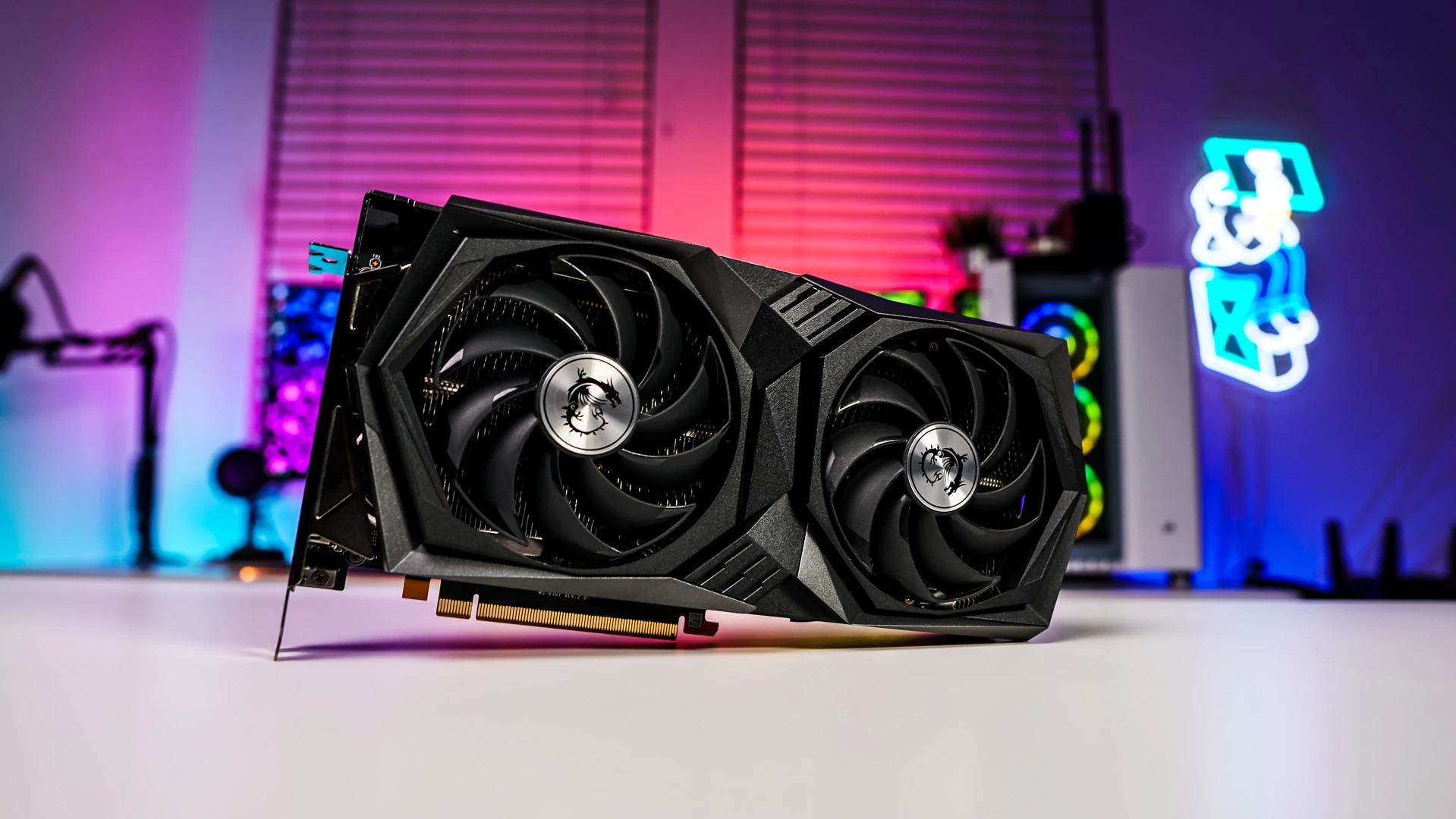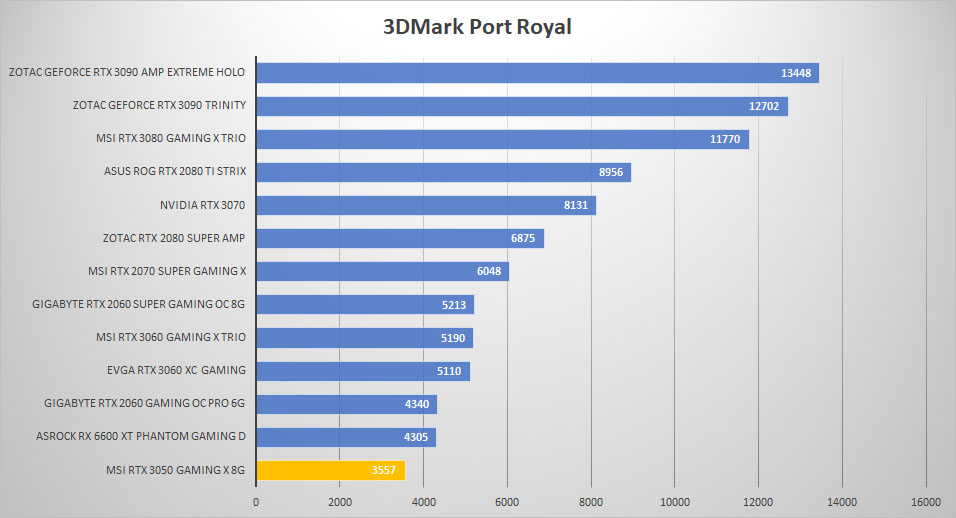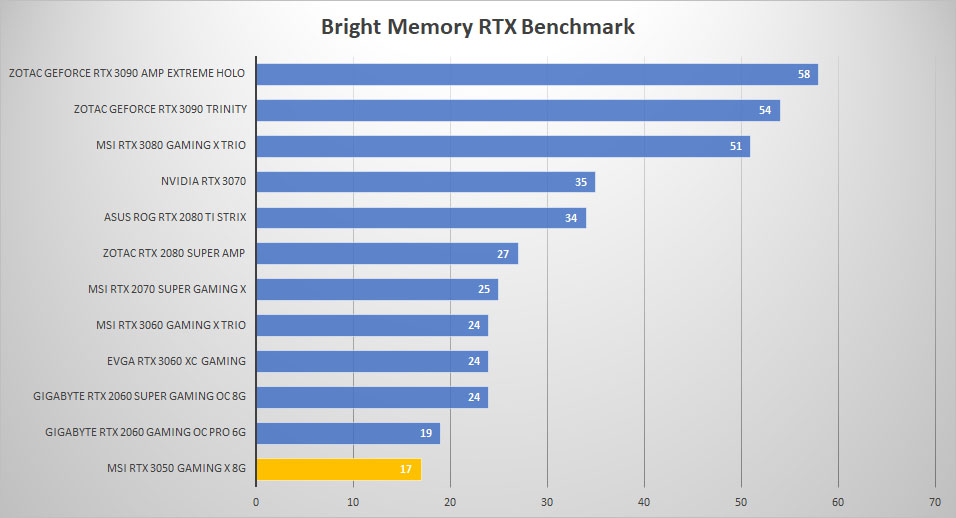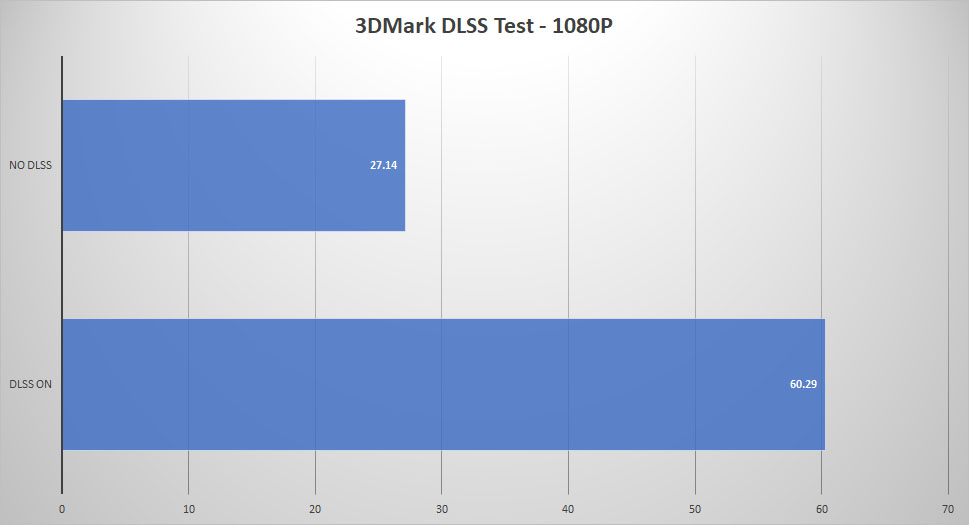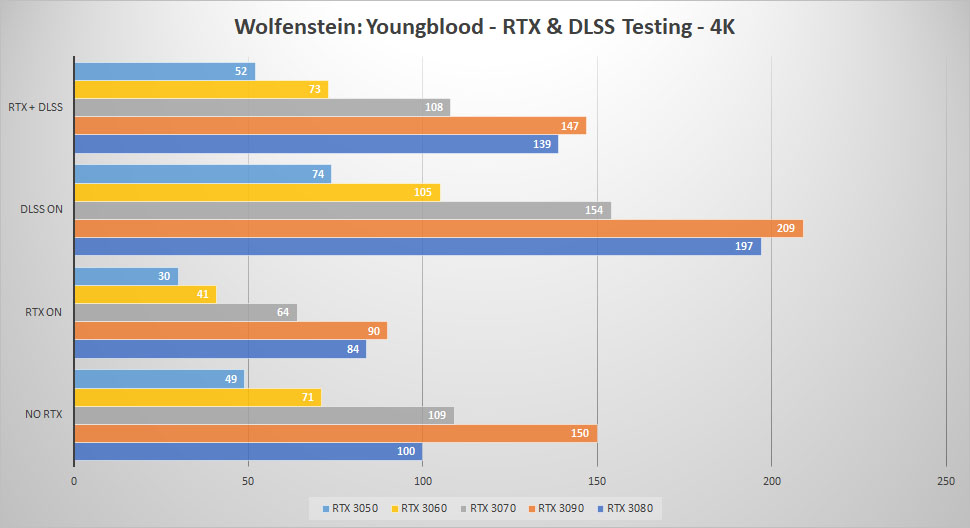Ray Tracing & DLSS Testing
This is the first time we’ve seen a graphics card from NVIDIA in this performance level that features both RT and Tensor cores. The RTX 3050 features 80 3rd generation Tensor cores and 20 2nd generation RT cores. So you will be able to enable things like real-time ray tracing and DLSS. To test this we first run 3DMark’s Port Royal benchmark.
Next we run the Bright Memory RTX benchmark. We run this benchmark at 4K resolution and have RTX at “High” and DLSS at “Balance”.
DLSS is a great technology and one that you should really take advantage of if a game you play supports it. Basically it renders the game at a lower resolution and then up-scales it to the resolution that you are running. So to test this we first run the DLSS benchmark in 3DMark.
As you can see at 4K we only get 27.14 FPS, but when we turn DLSS on we get 60.29!
The real killer thing is if your game supports both ray tracing and DLSS. In Wolfenstein: Youngblood we run the game in 4K without anything turned on to get a baseline score. Then we enable RTX and you’ll see we take a performance hit. We then turn that off and turn DLSS on and we get a very large performance boost. Finally we enable both RTX and DLSS. This will allow you to have those beautiful ray-traced reflections without a massive performance hit.


